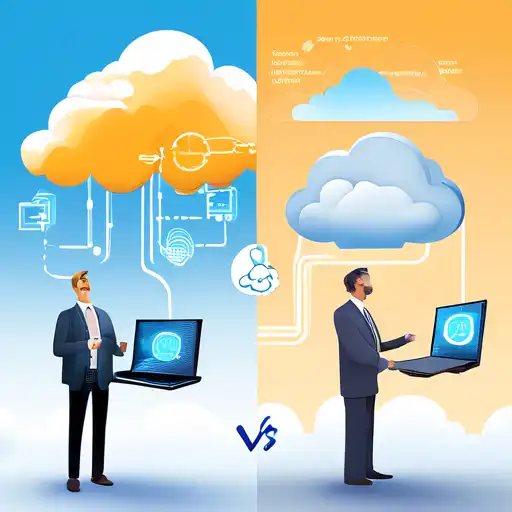Introduction to Edge Computing and Cloud Computing
In the rapidly evolving world of technology, understanding the differences between edge computing and cloud computing is crucial for businesses and individuals alike. Both technologies play pivotal roles in data processing and storage, but they cater to different needs and scenarios.
What is Edge Computing?
Edge computing refers to the processing of data near the source of data generation, rather than relying on a centralized data-processing warehouse. This approach minimizes latency, reduces bandwidth use, and enhances real-time data processing capabilities.
What is Cloud Computing?
Cloud computing, on the other hand, involves the delivery of computing services—including servers, storage, databases, networking, software, analytics, and intelligence—over the Internet ("the cloud") to offer faster innovation, flexible resources, and economies of scale.
Key Differences Between Edge Computing and Cloud Computing
While both edge computing and cloud computing are designed to process data, they differ significantly in several aspects:
- Latency: Edge computing significantly reduces latency by processing data closer to the source, whereas cloud computing may introduce delays due to data traveling to and from centralized servers.
- Bandwidth: By processing data locally, edge computing reduces the need for extensive bandwidth, unlike cloud computing which relies heavily on internet bandwidth.
- Data Security: Edge computing can offer enhanced security for sensitive data by keeping it local, while cloud computing requires robust security measures to protect data during transit and storage.
- Scalability: Cloud computing excels in scalability, allowing businesses to easily scale up or down based on demand, whereas edge computing is more limited in this regard.
Choosing Between Edge Computing and Cloud Computing
The choice between edge computing and cloud computing depends on the specific needs of a business or application. For applications requiring real-time processing and low latency, edge computing is the preferred choice. Conversely, for applications that demand scalability and flexibility, cloud computing is more suitable.
Future Trends in Edge and Cloud Computing
As technology continues to advance, the lines between edge computing and cloud computing may blur, with hybrid models emerging to leverage the strengths of both. Innovations in IoT, 5G, and AI are expected to drive further adoption and evolution of these technologies.
For more insights into the latest technology trends, explore our technology trends section.
Conclusion
Understanding the key differences between edge computing and cloud computing is essential for making informed decisions in today's digital landscape. By considering factors such as latency, bandwidth, security, and scalability, businesses can choose the right computing model to meet their needs.
